Rybelsus Side Effects: What You Should Know
What is Rybelsus?
Rybelsus is taken in conjunction with a healthy diet and exercise regimen to reduce high blood sugar in persons with type 2 diabetes. Rybelsus is a member of the group of drugs known as GLP-1 receptor agonists. A different name for it is an incretins mimic. Keeping blood sugar levels under control helps prevent kidney damage, blindness, nerve damage, limb loss, and issues with sexual function. Your chance of having a heart attack or stroke may be reduced if your diabetes is well controlled, but Rybelsus side effects are also there, which will be covered in this article. But first, we need to understand its mechanism.
Rybelsus Mechanism of Action:
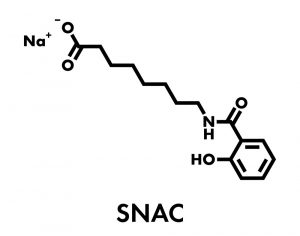
Rybelsus (Semaglutide) is comparable to a hormone your body naturally produces (incretins). It functions by triggering the release of insulin in response to elevated blood sugar (such as after eating) and reducing the amount of sugar your liver produces.
When food is consumed, the stomach secretes gut peptides known as incretin hormones. Additionally, they encourage the release of insulin in response to elevated blood glucose levels. GIP (glucose-dependent insulin tropic polypeptide) and GLP-1 are two incretin hormones (glucagon-like peptide-1). Natural incretin release is decreased or absent in persons with type 2 diabetes. Rybelsus is one pharmacological drug that can be used to stimulate it.
Despite being artificial, Rybelsus has a 94% structural similarity to human GLP-1. It functions similarly to GLP-1 and binds to GLP-1 receptors, causing the pancreas to release more insulin, decreasing the amount of glucagon secreted by the liver, and promoting satiety by delaying stomach emptying. Rybelsus Side Effects are common with regular usage.
How does Rybelsus work?
Rybelsus mimics the actions of GLP-1, an incretin hormone that is produced naturally and is often released after a meal. After eating, Rybelsus increases the release of insulin, lowers the quantity of glucose made by the liver, and promotes satiety.
Rybelsus Dosing:
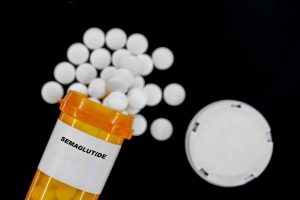
Tell patients to take Rybelsus with no more than 4 ounces of plain water and no more than 30 minutes prior to the first food, drink, or other oral medication of the day.
The effect of Rybelsus will be lessened by decreased absorption if you wait less than 30 minutes or take it with food, beverages, or other oral drugs. The absorption of Rybelsus may be increased by delaying eating for longer than 30 minutes.
Start off with 3 mg of Rybelsus once daily for 30 days. The 3 mg dose is not beneficial for glycaemic control and is just meant to start a treatment. Increase the dosage to 7 mg once daily after 30 days on the 3 mg dose.
If more glycaemic control is required after at least 30 days on the 7 mg dose, the dose may be increased to 14 mg once daily. It is not always advised to take two 7 mg Rybelsus pills to get a dose of 14 mg. This cannot achieve the proper dosing a body require.
A missed dose should not be taken; instead, the next dose should be taken the next day. Swallow the tablets whole. Do not split, crush, or chew tablets. Rybelsus Side Effects can be seen with continued usage.
Rybelsus Side Effects:
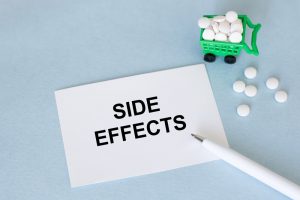
It is possible to experience Rybelsus Side Effects such as nausea, vomiting, abdominal pain, appetite loss, diarrhea, or constipation. As you take Semaglutide on a regular basis, nausea typically becomes better. Inform your doctor or pharmacist as soon as possible if any of these side effects persist or get worse.
Keep in mind that your doctor has recommended this medication because they believe it will benefit you more than it will harm you. Many users of this medicine report no significant negative Rybelsus Side effects.
Inform your doctor right away if you experience any severe side effects, such as kidney problems (such as a change in the amount of urine), changes in vision (such as blurred or decreased vision), or symptoms of pancreatitis or gallbladder disease (such as persistent nausea and vomiting or excruciating stomach/abdominal pain).
Although Rybelsus alone typically does not result in low blood sugar or hypoglycaemia, if this medication is administered along with other diabetic drugs, low blood sugar may happen.
Hyperglycaemia, or elevated blood sugar, can cause symptoms like increased thirst and urination. Inform your doctor straight once if you experience any of these symptoms. You might need to raise your dosage.
Rarely will Rybelsus allergic reactions be there. However, if you experience any major Rybelsus allergic reaction symptoms, such as a rash, itching, or swelling (particularly of the face, tongue, or throat), severe dizziness, or difficulty breathing, seek medical attention right away.
An allergic reaction is possible after using Rybelsus. This Rybelsus side effects wasn’t specifically reported in studies. But it has been reported by people who took the drug after it came on the market.
If you develop serious Rybelsus Side Effects or any Rybelsus allergic reaction, call your doctor right away. If the side effects seem life threatening or if you think you’re having a medical emergency, immediately call 911 or your local emergency number.
| Rybelsus(Semaglutide) | Price | Shop |
| Brand Rybelsus 3mg | $246.28 | Check Now |
| Brand Rybelsus 7mg | $217.96 | Check Now |
| Brand Rybelsus 14mg | $222.91 | Check Now |
Rybelsus for Weight Loss:
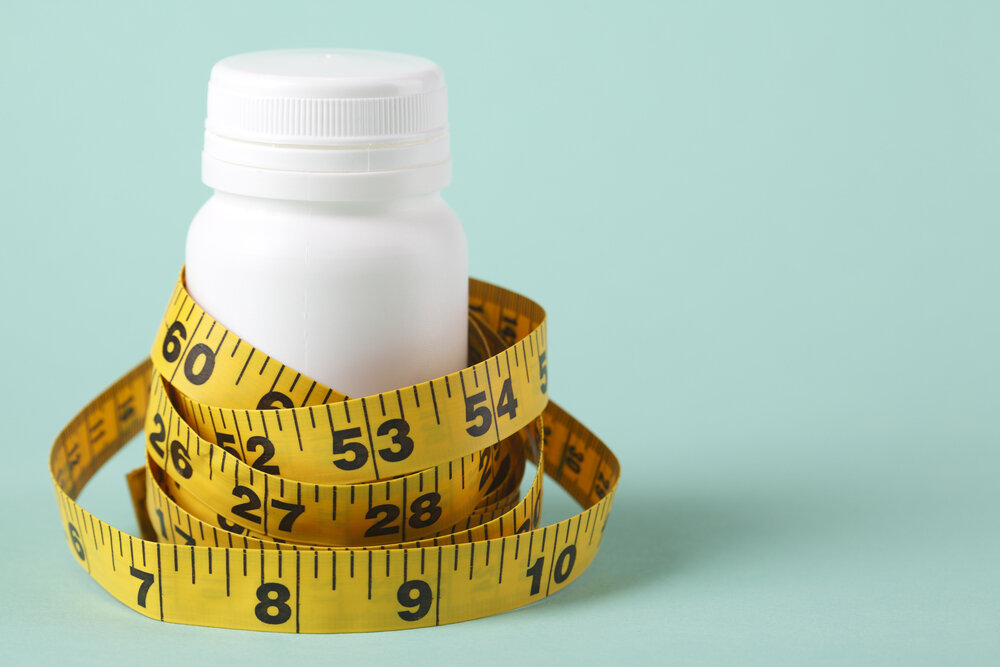
Many people lose weight even though Rybelsus is not a weight loss medication. It may complement a healthy lifestyle to increase weight loss. Rybelsus 7mg caused people to lose an average of five pounds (2.3 kg), while Rybelsus 14mg caused them to lose 8.1 pounds (3.7 kg). One of the ways Rybelsus weight loss functions is by assisting with post-meal satiety (which means suppressing hunger post meal with feeling of fullness).
Semaglutide Weight Loss:
Semaglutide, the active ingredient or the salt in Rybelsus medication helps adults with type 2 diabetes over the age of 18 to better control their blood sugar levels. It is typically provided after oral diabetic treatments have failed or stopped working.
When taking Rybelsus for diabetes(type 2 diabetes), some persons have a weight reduction of 2 to 4 kg.
According to studies, after 26 weeks, persons typically lost:
- When using Rybelsus 7mg, 2.3 kg.
- When using Rybelsus 14 mg, 8.1 pounds (3.7 kg) were gained.
Once Rybelsus therapy has begun, people with greater baseline body weights and those who have more digestive issues may be more likely to lose weight. Diabetes type 1 is not managed with Rybelsus. Hence, Semaglutide weight loss is a helpful if taken properly. Rybelsus side effects such as weigh loss is common.
Rybelsus and Kidney Disease:

In individuals receiving treatment with GLP-1 receptor agonists, such as semaglutide, there have been post-marketing reports of acute kidney injury and exacerbation of chronic renal failure, which may occasionally necessitate hemodialysis.
Some of these incidents have been documented in patients who don’t have kidney disease as an underlying condition. The majority of the recorded incidents were patients who had also suffered diarrhea, loss of water, vomiting, or nausea. When starting or increasing Rybelsus dosage in patients who are experiencing severe adverse gastrointestinal effects, keep an eye on their renal functioning which can be a reason for Rybelsus and kidney disease.
Rybelsus and Thyroid Cancer:

A serious Rybelsus side effects can be possible thyroid tumors, including cancer. Rybelsus comes with a boxed warning for the risk of thyroid cancer. The Food and Drug Administration’s most severe warning is a boxed warning.
If you experience a lump or swelling in your neck, hoarseness, difficulty swallowing, or shortness of breath, let your doctor know. These might be thyroid cancer symptoms.
Rybelsus and medications that are similar to Rybelsus have been shown to produce thyroid tumors, including thyroid cancer, in animal tests. It is unknown if Rybelsus may lead to thyroid tumors or medullary thyroid carcinoma (MTC), a kind of thyroid cancer.
Rybelsus and Constipation:
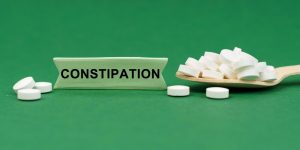
Rybelsus has been linked to a number of adverse Rybelsus side effects, including Rybelsus constipation. Everybody occasionally experiences constipation. Constipation can, however, get really bad if it’s brought on by a prescription medication that you use regularly. Rybelsus side effects like constipation can cause nausea, rectal bleeding, or intestinal blockage if left untreated.
Rybelsus Constipation symptoms could include:
- Having fewer than three bowel motions per week and difficult-to-pass stools,
- Feeling as though there is still more that you can’t pass after passing some stool,
- Stomach-ache which worsens.
How long do Rybelsus side effects last?
When taking Rybelsus for the first time or after a dose increase, nausea, vomiting, and diarrhea are more typical. This is necessary since it takes time for your body to adjust to the medicine. Following dose increases, the majority of patients typically experience these Rybelsus side effects only for a few days or weeks.
Rybelsus vs Ozempic:
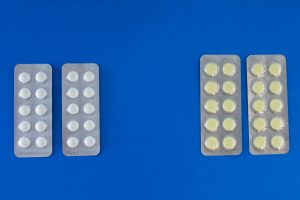
Ozempic is an injection that is given once each week under the skin of your thigh, upper arm, or abdomen. With each dose, it’s critical to switch up the injection locations. Before using the pen on your own, ask your healthcare physician or pharmacist to demonstrate how to use it.
0.25 mg once weekly is the typical starting dose. However, this dose has no effect on blood sugar. Instead, it aids in medication acclimation and reduces the risk of gastrointestinal distress.
The dose is typically increased to 0.5 mg once weekly after at least 4 weeks. In some cases, your doctor may need to change the dose. The maximum advised dose is 2 mg administered once per week.
Treatment for Type 2 diabetes is effective with both Rybelsus and Ozempic. Semaglutide is a GLP-1 agonist that typically reduces hemoglobin A1C by an average of 1%. A1C measures the average blood sugar levels over the previous three months. Additionally, it has been demonstrated that both drugs can reduce body weight by an average of roughly 6 lbs.
However, Ozempic offers some additional advantages. Clinical studies have demonstrated a 26% reduction in the risk of heart attack, stroke, or death from heart disease in some individuals. Rybelsus has not endorsed this advantage. However, research indicates that people with heart problems are safe from harm.
The ideal treatment for your Type 2 diabetes will be determined by your healthcare professional. This usually depends on your individual requirements, ,Ozempic and Rybelsus side effects, and other health issues etc.
Rybelsus vs Metformin:
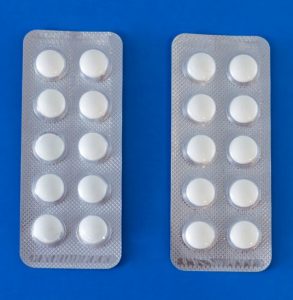
Numerous medications are available to aid in managing your blood sugar if you have Type 2 diabetes. Metformin is frequently chosen as the first treatment. Its mechanism of action is so distinctive that studies are being done on it to see if it may treat conditions other than diabetes.
Both Rybelsus and Metformin are available in oral tablet forms. However, there may be some variations in how frequently and when you take them. Rybelsus is taken orally (OD) with water in the morning. Furthermore, you must take it at least 30 minutes before ingesting anything or taking any medication. Any time of day, metformin may be taken with a meal. But the kind of metformin you use will determine how frequently you should take a dose.
Depending on your healthcare provider’s instructions, you may take a dose of immediate-release (IR) metformin once or twice daily. You will probably take one dose of ER metformin each day with a meal in the evening.
Metformin and Rybelsus are both successful treatments for Type 2 diabetes. Each has been proven to reduce hemoglobin A1C, a measure of blood sugar levels over three months, by a little more than 1%. However, there are a few variations in how and when they’re employed.
As previously said, metformin is regarded as the first line of treatment for the majority of patients. Additionally, a new review hints that it might also have some additional cardiovascular advantages. However, not everyone can use or tolerate metformin. There might be additional choices in that situation.
It is not normally advised to use Rybelsus as the first line of treatment. However, it might be combined with other drugs, such metformin, to have even more blood sugar-lowering effects. Rybelsus is the sole available oral GLP-1 agonist if you need to add one to your regimen. Rybelsus Side Effects can be seen with continued usage.
Rybelsus vs Jardiance:
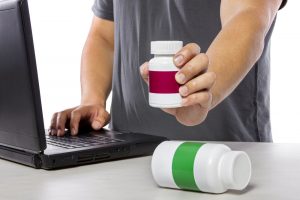
In combination with other drugs, dietary modifications, and exercise, Jardiance is an oral medication that may be used to lower blood sugar levels or lower the risk of cardiovascular disease in some persons with type 2 diabetes or heart failure.
An SGLT-2 inhibitor known as Jardiance or Empagliflozin works on the sodium-glucose transporter 2 receptors found in the proximal renal tubules. It averts filtered glucose in the urine from being reabsorbed into the body’s circulatory system.
It carries an elevated risk of infections, hypotension, and diabetic ketoacidosis. Prescribed for diabetes type 2, cardiovascular risk reduction, and heart failure with reduced ejection fraction.
As a result, when the plasma glucose is high and more glucose is filtered, it has a bigger effect on reducing blood glucose. In contrast, less plasma glucose will be filtered into the renal tubules when blood sugar levels are low. It also has a glucose-dependent mechanism as a result, and people with normal or low blood sugar are not affected by it.
In the Pioneer 2 Trial, Oral Semaglutide (Rybelsus 14 mg) and 25 mg Jardiance were tested for its ability to reduce blood sugar levels. At week 26, it was discovered that Rybelsus, when taken daily in a dose of 14 mg, outperformed Jardiance, when taken in a dose of 25 mg.
Rybelsus is a more effective anti-diabetic drug, although it is more expensive. Additionally, Rybelsus has greater ability to promote weight loss. Rybelsus Side Effects can be seen with continued usage. For people with heart failure, however, Jardiance is the best option. Consulting your physician is highly recommended before starting or changing any medications.
Rybelsus vs Trulicity:
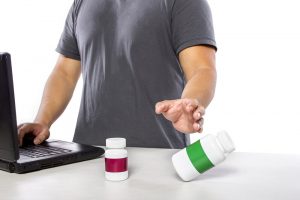
Semaglutide injections such as Rybelsus and Trulicity are used in combination with diet and exercise to help persons with type 2 diabetes mellitus control and combat their blood sugar levels.
Indistinguishable side effects between Rybelsus and Trulicity include nausea, stomach ache, diarrhea, vomiting, and constipation. Reduction of appetite is one of the side effects of Rybelsus that differs from Trulicity.
Interactions between insulin secretagogues, insulin, and other oral drugs used concurrently are possible with both Rybelsus and Trulicity. Rybelsus’ side effects are almost the same as that of Trulicity.
GLP-1 receptor agonists Trulicity and Rybelsus are both prescribed drugs for type 2 diabetes mellitus. Despite having similarities, they are distinct drugs with unique active components. Semaglutide in Rybelsus and Dulaglutide in Trulicity. Additionally, the two drugs can have different effects on you.
The approach of administration is one of the main distinctions between the two medications. Using a self-injecting pen device, Trulicity is administered as a subcutaneous (s.c.) injection under the skin. On the other hand, Rybelsus is an oral semaglutide. The recommended doses for each medication also differ.
Rybelsus side effects are almost similar to Trulicity. It is significant to remember that every person reacts to drugs differently. Because of this, some people will find Rybelsus to be more effective than Trulicity. Although, Rybelsus Side Effects can be seen with continued usage.
FAQs:
Does Rybelsus cause constipation?
Yes, Constipation being the common Rybelsus side effects.
Can you just stop taking Rybelsus?
Yes. If you and your doctor determine that Rybelsus side effects are occurring or is not effective, you may abruptly stop taking it.
What does Rybelsus do?
Along with a healthy diet, regular exercise, and typically other drugs, Rybelsus can be used to manage type 2 diabetes.
How long does it take for Rybelsus to start working?
After using Rybelsus for 30 days, your blood sugar levels may start to be controlled. However, it can take some time before there are noticeable changes.
How does Rybelsus work for weight loss?
Despite being artificial, Rybelsus has a 94% structural similarity to human GLP-1. It functions similarly to GLP-1 and binds to GLP-1 receptors, causing the pancreas to release more insulin, decreasing the amount of glucagon secreted by the liver, and promoting satiety by delaying stomach emptying.
Why can’t you cut Rybelsus in half?
The drug when split or cut is exposed to air and moisture. The pills’ exposed surfaces gets harmed by oxygen, making them less effective than intended. Although, for some people it often help patient save a lot of money. But if not done properly, it can be harmful and expensive both.
Will Rybelsus cause hair loss?
No. This is not been reported in the Rybelsus side effects.
How long does Rybelsus stay in your system?
After your last dose, Rybelsus remains in your system for roughly 5 weeks. You should wait at least two months after discontinuing Rybelsus before attempting to get pregnant if you’re planning to do so.
Does Rybelsus cause kidney problems?
Rybelsus use has been linked to reports of both short-term renal injury and long-term kidney disease worsening. Dehydration, nausea, vomiting, and diarrhea are among the symptoms. Before using Rybelsus, make it crucial to let your doctor know if you’ve ever experienced kidney issues.
Is Rybelsus better than Ozempic?
In place of Rybelsus, your doctor might advise Ozempic if you have heart disease. In adults with type 2 diabetes and heart disease, Ozempic is approved to lower the risk of serious cardiac issues. This use of Rybelsus has not been authorized as rybelsus side effects can persist.


